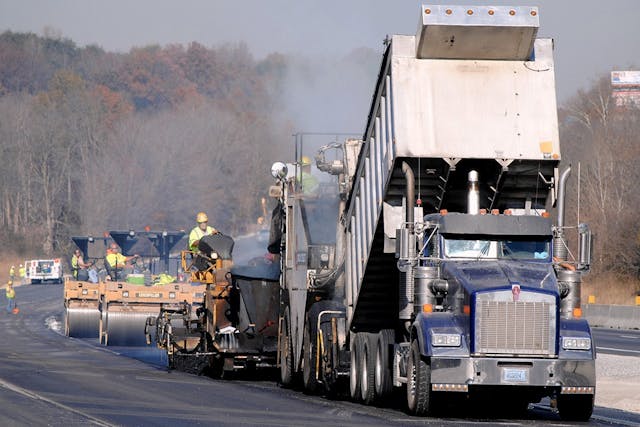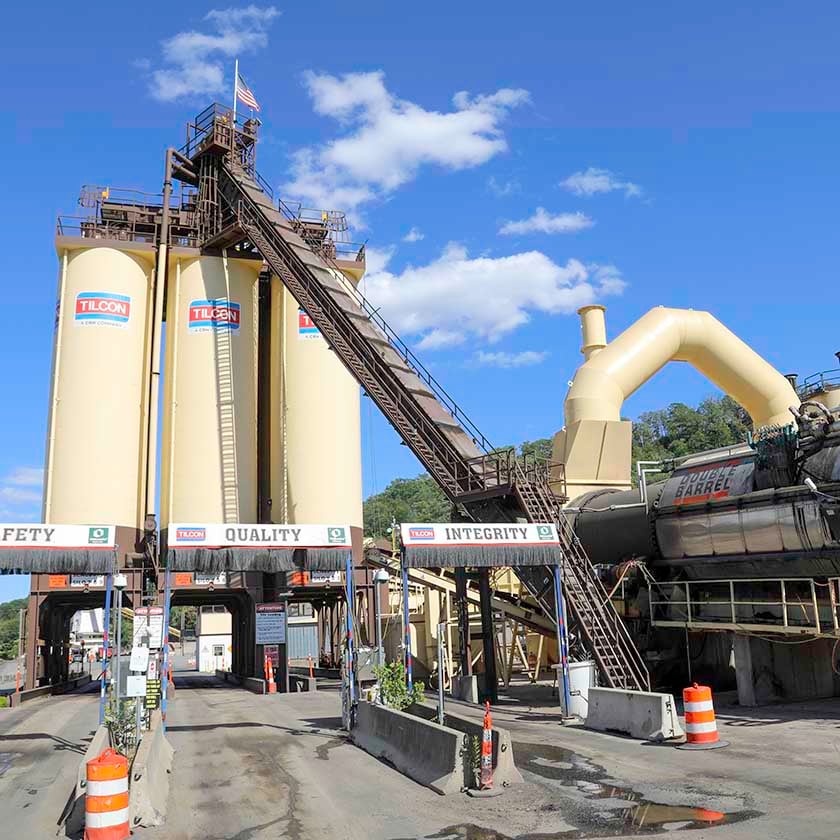Reimagine Your Room: Hot Mix Asphalt Paving for Angled Parking Lot Tasks
Reimagine Your Room: Hot Mix Asphalt Paving for Angled Parking Lot Tasks
Blog Article
Opening the Keys of Warm Mix Asphalt Technology
Exploring the depths of hot mix asphalt technology reveals a globe where specific formulations and meticulous processes merge to form our roads and infrastructure. The fusion of aggregates, binders, and fillers isn't simply a building job however a calculated orchestration of longevity and efficiency. As we peer right into the intricate dance of components, a tapestry of strength and sustainability unravels. What exists underneath this surface of asphaltic mastery, and what keys wait to be revealed in the realm of leading advancements?
Relevance of Hot Mix Asphalt
Warm Mix Asphalt plays a vital role in modern-day infrastructure growth due to its longevity and cost-effectiveness. As the most generally used leading product for roads, highways, and parking area, Hot Mix Asphalt uses a range of benefits that add to its importance in building jobs. One vital advantage is its capability to withstand heavy website traffic loads and extreme climate condition, giving a dependable and resilient surface area for transportation networks. Additionally, Hot Mix Asphalt is cost-efficient in both first building and construction and long-term maintenance, making it a recommended selection for many infrastructure jobs.
The durability of Warm Mix Asphalt stems from its structure, which includes accumulations, binder, and filler materials that are carefully picked and blended to satisfy specific efficiency requirements. On the whole, the value of Hot Mix Asphalt in framework advancement can not be underrated, as it continues to be a cornerstone of modern building practices.
Elements of Asphalt Mixes
The composition of asphalt blends consists of meticulously chosen accumulations, binder, and filler materials that are critical for accomplishing specific efficiency requirements. Aggregates are the key component of asphalt blends, providing stamina and security. These accumulations can be natural, such as gravel or smashed stone, or synthetic, like recycled products from old sidewalks. The binder, usually asphalt or asphalt cement, holds the accumulations together and supplies adaptability and sturdiness to the mix. The option of the binder is essential as it straight affects the mix's efficiency in different weather condition conditions. Fillers, such as hydrated lime or Rose city concrete, are used to enhance the mix's workability and aging resistance. Angled Parking.
The mix and percentage of these elements play a substantial duty in determining the quality and efficiency of the asphalt mix. Engineers thoroughly make the mix to meet specific requirements, considering factors like traffic volume, environment problems, and sidewalk life-span. Proper selection and harmonizing of accumulations, binder, and fillers are crucial for developing sturdy, durable asphalt sidewalks.
Mixing and Production Techniques

When the accumulations are chosen, the binder, usually asphalt concrete, is included to bind the products together. The binder's top quality and amount significantly impact the mix's resistance, versatility, and strength to environmental factors. Additionally, fillers like moisturized lime or Rose city concrete may be incorporated to improve certain attributes of the asphalt mix, such as its workability or wetness resistance.
During manufacturing, the accumulations and binder are heated up, usually between 250-325 ° F(121-163 ° C ), to facilitate blending and make sure correct layer of the accumulations. The mixing process has to be detailed to accomplish a homogeneous mixture that advertises the preferred performance attributes of the asphalt. Different techniques, such as set blending or drum mixing, are used to accomplish consistent and high-grade asphalt blends for building projects.
Variables Impacting Asphalt Efficiency
Elements affecting asphalt efficiency encompass a range of variables that affect the resilience, durability, and total quality of asphalt pavements. One crucial variable is the quality of products used in the asphalt mix.

Design factors to consider, such as sidewalk density and water drainage, are vital in making certain go to this site the lasting efficiency of the asphalt pavement. By carefully considering these elements, engineers and specialists can enhance asphalt efficiency and improve the service life of pavements.
Lasting Practices in Asphalt Modern Technology

Furthermore, the advancement of warm-mix asphalt (WMA) innovations has gained grip over the last few years. WMA permits the manufacturing and positioning of asphalt mixes at reduced temperature levels contrasted to standard hot-mix asphalt, leading to decreased power intake and greenhouse gas discharges. The usage of porous asphalt blends can assist reduce stormwater runoff concerns by enabling water to penetrate with the pavement and right into the ground, promoting all-natural water filtration and reenergize processes. By applying these sustainable methods, the asphalt industry can add to Full Report building an extra environmentally pleasant and resilient infrastructure network.
Final Thought
To conclude, hot mix asphalt innovation plays a crucial role in contemporary facilities advancement as a result of its durability and cost-effectiveness. By very carefully stabilizing elements, using correct blending strategies, and taking into consideration numerous variables, designers can develop high-quality asphalt mixes that withstand heavy traffic loads and harsh weather. Welcoming lasting methods, such as utilizing recycled products and warm-mix innovations, additionally improves the environmental friendliness of asphalt technology.
Blending and manufacturing methods in hot mix asphalt modern technology entail the exact combination and processing of accumulations, binder, and fillers to produce a high-performance and durable asphalt mix.Variables affecting asphalt performance incorporate an array of variables that affect the resilience, long life, and general high quality of asphalt sidewalks. Lasting practices in asphalt modern technology include different initiatives intended at minimizing the environmental influence of asphalt production and paving procedures. By integrating reclaimed asphalt sidewalk (RAP) and recycled asphalt shingles (RAS) right into new asphalt blends, the industry can dramatically minimize the intake of raw materials and power, while also reducing landfill waste.
WMA enables for the production and placement of asphalt blends at lower temperature levels compared to standard hot-mix asphalt, resulting in reduced power intake and greenhouse gas discharges.
Report this page